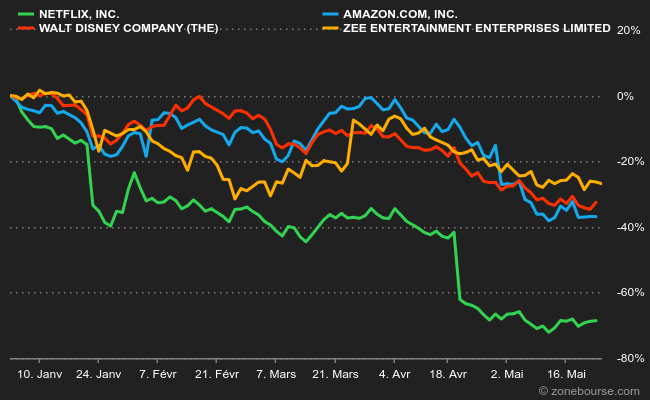Netflix has a range of Indian movies in various regions, but for TV series – essential for retaining viewers on its platform – it has only a few hit shows in Hindi and no shows in regional languages.
Conquering Tollywood
The American company has planned at least six television series in South Indian languages this year, actively seeking contracts in Tollywood, as the Telugu film and television industry is called, as well as in the industry. of Tamil Film and Television, six people with knowledge of the company’s plans told Reuters.
As prolific as Hindi-language Bollywood and known for its flashy, action-packed content, the South Indian film industry has been doing extremely well lately, dominating Indian box office receipts so far this year.
Netflix has “meeted just about every producer and director here. You’ll see the results of those meetings by next year,” said one such person, a Tollywood producer. All sources spoke on condition of anonymity, fearing they could lose work opportunities.
Netflix has long positioned India, with its population of 1.4 billion, as a key market. In 2018, two years after its launch in the country, CEO Reed Hastings predicted that its next 100 million subscribers would come from India. But so far, it has only 5 to 6 million, according to analysts’ estimates. By Hastings’ own admission, Netflix has been frustrated with its lack of success in India compared to its other markets. This new push south also comes at a time when the search for growth takes on new urgency.
The streaming giant stunned investors last month when it reported a quarterly net loss in global subscribers for the first time in more than a decade, and predicted bigger losses to come. Its stock has lost nearly half its value since then.
Better positioned rivals
In India, Netflix outperforms its rivals in terms of revenue share in the subscription video-on-demand market, with a 39% share in 2021, compared to 23% for its closest rival, Disney Plus Hotstar, according to Media Partners. Asian.
But analysts say its subscriber base is too small to be comfortable. Alongside Netflix’s 5-6 million, Disney Plus Hotstar, which owns the rights to broadcast cricket, has around 50 million. Its local rival, Zee5, has around 20 million and analysts also believe that Amazon Prime and SonyLIV’s subscriber numbers are much higher than Netflix’s.
The potential of the Indian market “cannot be underestimated”, says Julia Alexander, chief strategy officer at US-based Parrot Analytics. “If Netflix doesn’t try to capitalize on this by building closer relationships with local creators, local studios/production companies, and carving out a real foothold in India, someone else will” , she said.
Asked by Reuters about criticism of its performance in India and its push into regional languages, Netflix said in a statement that it was confident in what it called a “winning long-term strategy in India”.
“India continues to represent a tremendous investment and growth opportunity for Netflix, both in terms of membership numbers and the variety of content we offer our members,” the company said.
Too high a price and too low an offer
Much of Netflix’s struggles are due to its much higher prices in an extremely cost-conscious market. The company slashed its prices late last year, making it more competitive, but it’s still significantly more expensive than its rivals.
It charges 649 rupees, or about $8, per month for its highest quality streaming resolution plan, which allows up to four devices. A similar plan from Disney costs 299 rupees. Netflix’s mobile plan for a single device is Rs 149 for one month, while Disney charges the same amount for three months.
Netflix’s brand as a premium service may make the company reluctant to cut prices further, but it means its best, if not only, path to significant subscriber growth is to expand its supply of television programs, according to analysts.

However, according to two Indian producers, Netflix tends to take much longer than rivals to order shows and is less adept at providing feedback to content developers.
Netflix did not address this criticism in its response to Reuters.
Even adding new South Indian shows to its pipeline, Netflix still lags behind its rivals. For example, Amazon last month announced 22 new original TV shows, eight of them in Tamil or Telugu. “Netflix is lagging behind Amazon, Hotstar and SonyLIV because it’s still in the order stage, while the others have shows already released or about to be released,” according to a producer who said he was in talks with Netflix.

Stock market history of Netflix and its main competitors since January 1, 2022
